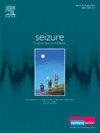第三部门帮助热线在癫痫支持中的作用:来自英国服务常规数据的回顾性分析(2020-2024)
IF 2.8
3区 医学
Q2 CLINICAL NEUROLOGY
引用次数: 0
摘要
目的:在全球范围内,由第三部门组织开办的免费获取的癫痫求助热线是支持领域的既定组成部分。尽管指南建议临床医生提醒个人使用它们,但它们的使用和影响从未报道过。我们的目标是量化英国癫痫求助热线的需求和性质;评估可及性和公平性;并探讨人们提出的问题的数据是否可以作为不断变化的社区需求的指标。方法回顾性分析2020年10月至2024年9月癫痫行动热线的匿名接触记录。使用描述性统计和发生率计算来评估接触特征、地理和社会经济分布以及由训练有素的顾问分配给接触者的主题代码。结果shelpline共收到来自25316人的32964次联系,主要是癫痫患者(69.7%)和家人/朋友(24.6%)。在此期间,使用人数增加了40%,超过了人口增长,2020/21年度为每1000例流行病例11.43人接触,2023/24年度为16.03人接触。联系人来自英国各地,但来自贫困地区的人数比预期的要少。用户在广泛的医疗、情感和实际问题上寻求支持,随着时间的推移,联系的复杂性也在增加。话题因贫困程度而异。随着时间的推移,提出的问题与现实世界的事件(例如,COVID-19、药物短缺)保持一致。结论对第三部门癫痫求助热线的首次系统检查表明,需求高且不断增长,覆盖范围广,但获取不公平。常规的求助热线数据可以为了解社区需求提供新颖、实时的视角。我们的分析方法可以支持对其他求助热线的评估。本文章由计算机程序翻译,如有差异,请以英文原文为准。
The role of third-sector helplines in epilepsy support: Insights from a retrospective analysis of routine data from a UK service (2020–2024)
Purpose
Globally, free-to-access epilepsy helplines run by third-sector organizations are an established part of the support landscape. Despite guidelines recommending clinicians signpost individuals to them, their usage and impact have never been reported. We aimed to quantify demand for, and the nature of, contacts to a UK epilepsy helpline; assess reach and equity of access; and explore whether data on the issues people raised might serve as an indicator of changing community needs.
Methods
Retrospective analysis of anonymized records from contacts to Epilepsy Action’s helpline between October 2020 and September 2024. Descriptive statistics and incidence rate calculations were used to assess contact characteristics, geographic and socioeconomic distribution, and the topic codes assigned to contacts by trained advisors.
Results
Helpline received 32,964 contacts from 25,316 individuals—mainly people with epilepsy (69.7 %) and family/friends (24.6 %). Use increased by 40 % over the period, exceeding population growth, with 11.43 contacts per 1000 prevalent cases in 2020/21 and 16.03 in 2023/24. Contacts came from across the UK, but fewer originated from more deprived areas than expected. Users sought support on a wide range of medical, emotional, and practical issues, with increasing contact complexity over time. Topics varied by deprivation level. Shifts over time in issues raised aligned with real-world events (e.g., COVID-19, medication shortages).
Conclusion
This first systematic examination of a third-sector epilepsy helpline reveals high and growing demand, broad reach, and access inequities. Routine helpline data may offer a novel, real-time lens on community needs. Our analytic method could support evaluations of other helplines.
求助全文
通过发布文献求助,成功后即可免费获取论文全文。
去求助
来源期刊

Seizure-European Journal of Epilepsy
医学-临床神经学
CiteScore
5.60
自引率
6.70%
发文量
231
审稿时长
34 days
期刊介绍:
Seizure - European Journal of Epilepsy is an international journal owned by Epilepsy Action (the largest member led epilepsy organisation in the UK). It provides a forum for papers on all topics related to epilepsy and seizure disorders.
 求助内容:
求助内容: 应助结果提醒方式:
应助结果提醒方式:


